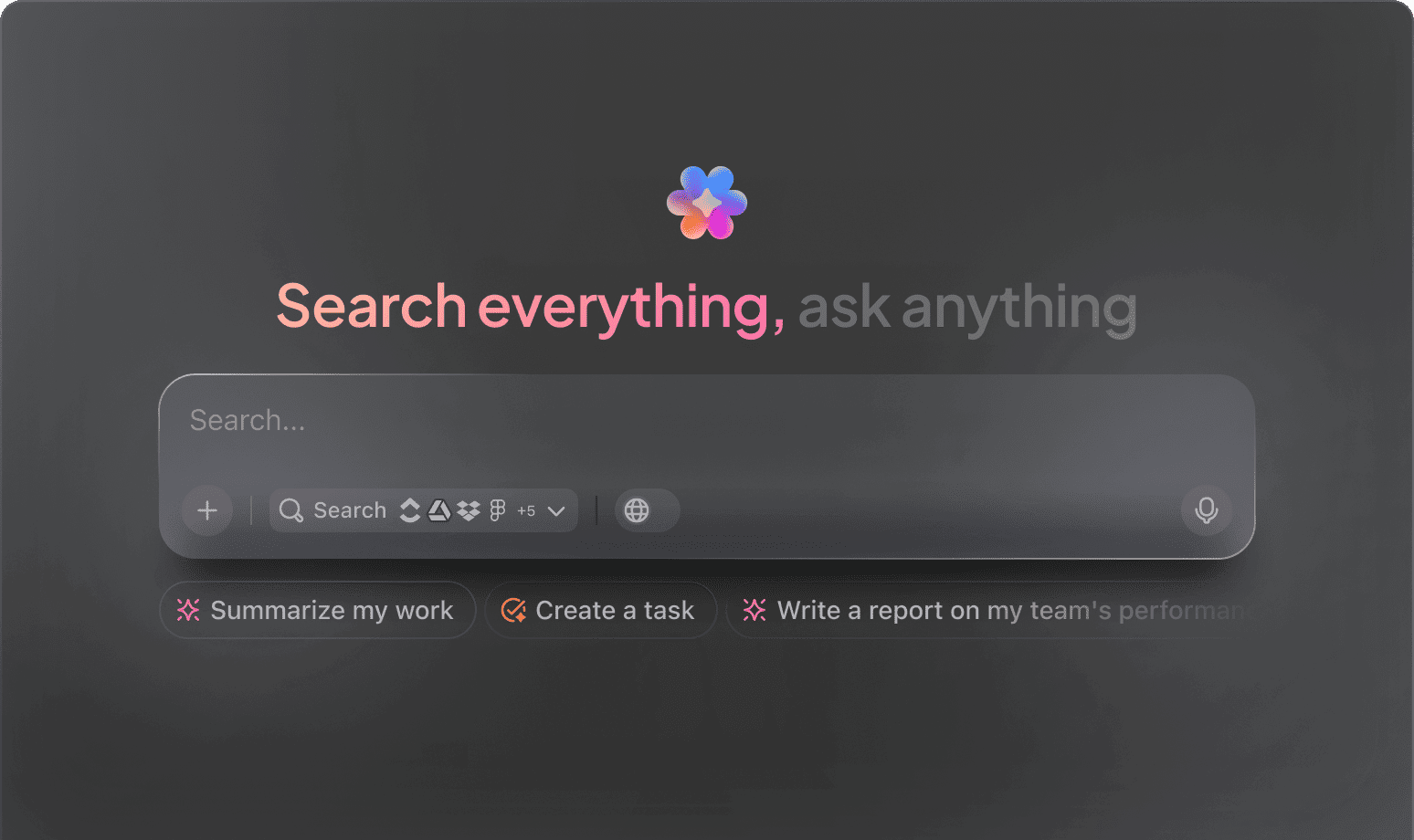AI for Agile Teams
Top AI Prompts to Enhance Agile Methodology
Accelerate sprint planning, improve collaboration, and elevate your Agile projects with ClickUp Brain's intelligent assistance.
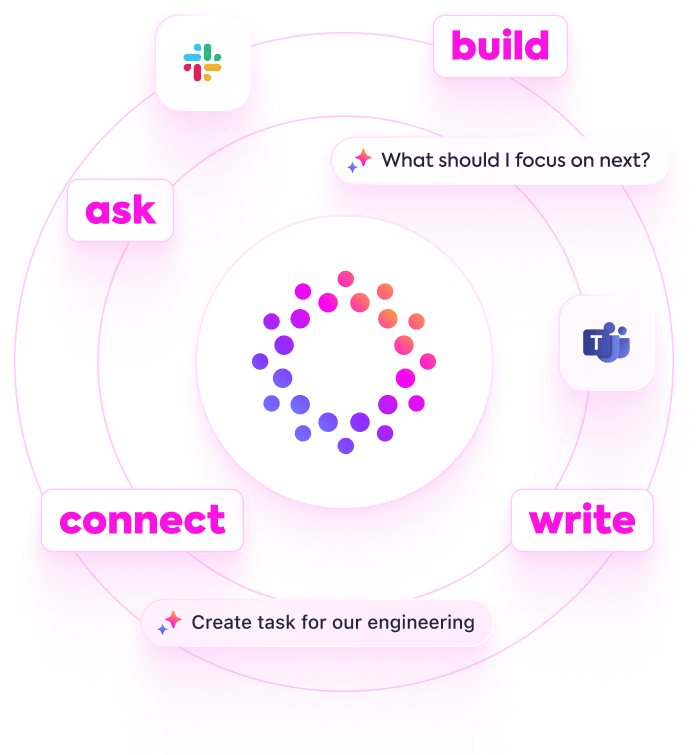
Trusted by the world’s leading businesses
AI Empowering Agile Teams
Harnessing AI Prompts to Elevate Agile Methodologies with ClickUp Brain
Agile project management thrives on adaptability, collaboration, and swift delivery—but managing sprints, backlogs, and cross-functional communication can get complex fast.
From sprint planning to retrospectives, user story mapping, and continuous integration, Agile teams juggle multiple workflows and evolving priorities. AI prompts are stepping in to simplify these challenges.
Agile teams leverage AI to:
- Quickly generate user stories and acceptance criteria
- Outline sprint goals and backlog priorities with clarity
- Extract key insights from retrospective feedback
- Transform meeting notes into actionable tasks and epics
Embedded within familiar tools like docs, boards, and task lists, AI in platforms such as ClickUp Brain moves beyond simple assistance. It actively shapes your Agile processes into clear, manageable workflows that keep teams aligned and productive.
ClickUp Brain Compared to Conventional AI
Why ClickUp Brain Stands Out
ClickUp Brain integrates seamlessly with your workflow, understanding your context so you can focus on delivering results.
Conventional AI Solutions
- Constantly toggling between apps to collect information
- Repeating your objectives with every query
- Receiving generic, irrelevant feedback
- Hunting through multiple platforms for a single document
- Interacting with AI that only processes commands
- Manually switching between different AI models
- Merely another add-on without deep integration
ClickUp Brain
- Deeply connected to your projects, documents, and team communications
- Tracks your progress and objectives continuously
- Provides insightful, context-driven guidance
- Offers consolidated search across all your resources
- Supports voice commands with Talk to Text
- Automatically selects the optimal AI model: GPT, Claude, Gemini
- Dedicated desktop app for Mac & Windows designed for efficiency
Agile Methodology Prompts
15 Powerful AI Prompts for Agile Teams Using ClickUp Brain
Accelerate Agile workflows—planning, retrospectives, and sprint management simplified.

Identify 5 innovative sprint planning techniques tailored for remote Agile teams, based on insights from the ‘Sprint Planning Best Practices’ doc.
Use Case: Enhances planning efficiency by leveraging proven remote strategies.
ClickUp Brain Behaviour: Analyzes linked documents to extract and suggest effective sprint planning methods.

What are the latest trends in backlog prioritization for mid-sized software projects in 2024?
Use Case: Guides product owners to make informed prioritization decisions.
ClickUp Brain Behaviour: Aggregates findings from internal reports; Brain Max can supplement with relevant external data when accessible.

Draft a user story template emphasizing customer value and acceptance criteria, referencing ‘User Stories Framework’ and recent sprint notes.
Use Case: Aligns development and QA teams with clear, actionable stories.
ClickUp Brain Behaviour: Extracts key elements from linked docs to construct a structured user story format.

Summarize velocity trends and sprint outcomes comparing Team Alpha and Team Beta from the ‘Sprint Metrics Q1’ doc.
Use Case: Facilitates performance review without manual data compilation.
ClickUp Brain Behaviour: Processes tabular and textual data to generate a concise comparative summary.

List top Agile tools integrations that enhance task automation, referencing internal tool evaluation and vendor specs.
Use Case: Supports teams in selecting automation solutions to boost productivity.
ClickUp Brain Behavior: Scans documents to identify frequently recommended tools and their key features.

From the ‘QA Testing Checklist’ doc, generate a comprehensive test case template for sprint deliverables.
Use Case: Simplifies test documentation and ensures coverage consistency.
ClickUp Brain Behavior: Extracts criteria and formats them into a reusable checklist within tasks or docs.

Summarize 3 emerging Agile coaching techniques from recent workshops and team feedback reports.
Use Case: Keeps coaching approaches current and impactful.
ClickUp Brain Behavior: Identifies recurring themes and best practices from linked materials.

From the ‘Team Collaboration Survey Q2’ doc, outline key preferences for communication tools and practices.
Use Case: Helps Agile coaches tailor collaboration strategies to team needs.
ClickUp Brain Behavior: Analyzes survey data to highlight common communication preferences and pain points.

Write concise and motivating sprint goal statements using the tone guidelines from ‘AgileVoice.pdf’.
Use Case: Accelerates creation of inspiring sprint objectives aligned with team culture.
ClickUp Brain Behavior: Draws tone and style cues from the document to propose varied goal statements.

Summarize key updates in the 2025 Agile Alliance guidelines and their implications for our sprint review process.
Use Case: Ensures compliance with evolving Agile standards.
ClickUp Brain Behavior: Condenses linked guideline documents; Brain Max can incorporate public updates if available.

Generate checklist items for sprint retrospective action plans, referencing company-specific feedback and best practices.
Use Case: Standardizes follow-up steps to improve team performance.
ClickUp Brain Behavior: Extracts actionable points and structures them into a clear checklist.

Create a comparison of Agile metrics dashboards used by Teams X, Y, and Z from internal analytics reports.
Use Case: Supports data-driven decisions for process improvements.
ClickUp Brain Behavior: Summarizes and formats comparative data into an easy-to-read layout.

What are the emerging trends in Agile scaling frameworks since 2023?
Use Case: Guides leadership on adopting scalable Agile practices.
ClickUp Brain Behavior: Synthesizes insights from research notes, whitepapers, and internal analyses.

Summarize key challenges and solutions reported in the ‘Remote Agile Teams’ feedback folder (communication, tools, engagement).
Use Case: Drives targeted improvements for distributed Agile teams.
ClickUp Brain Behavior: Extracts and prioritizes common issues and suggested remedies from surveys and feedback.

Summarize key cabin usability gaps from the Southeast Asia EV feedback folder (materials, layout, interactions).
Use Case: Drives region-specific product improvements.
ClickUp Brain Behavior: Extracts and prioritizes user-reported issues across survey responses, feedback notes, and tagged tickets.
Innovate Rapidly with ClickUp Brain
Cut down on redundant tasks, unify your team’s efforts, and produce superior results through AI-driven Agile workflows.





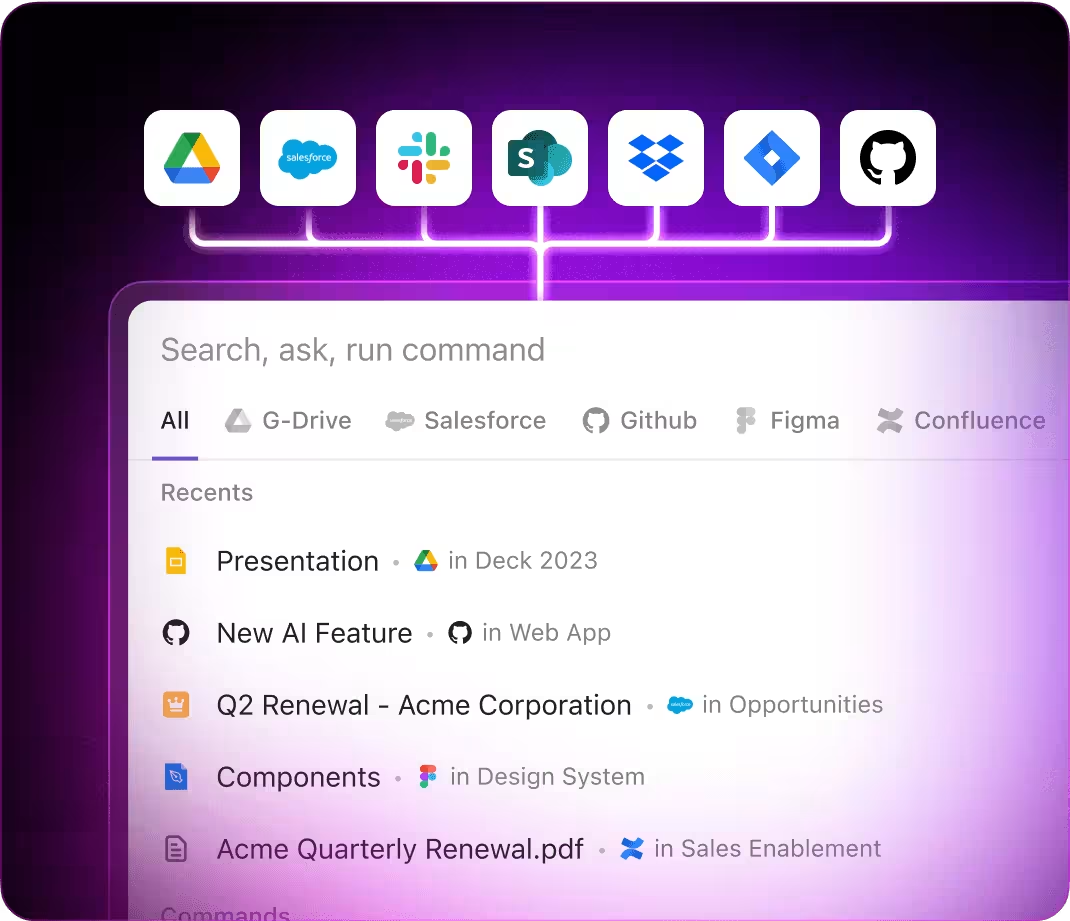
AI in Agile
Leading AI Applications in Agile Project Management with ClickUp Brain
Boost sprint efficiency, enhance team collaboration, and drive innovation through AI-powered prompts in your Agile process
From Sprint Ideas to Agile Documentation
Early sprint planning can be chaotic, with fragmented thoughts and scattered feedback. ClickUp Brain organizes these into clear, collaborative Agile documentation—right inside ClickUp Docs.
Leverage ClickUp Brain to:
- Convert initial user stories and backlog items into structured templates
- Produce fresh sprint goals informed by previous iterations (using context-sensitive AI assistance)
- With Brain Max, instantly explore historical sprint data, team comments, and project files to inspire your upcoming cycles.
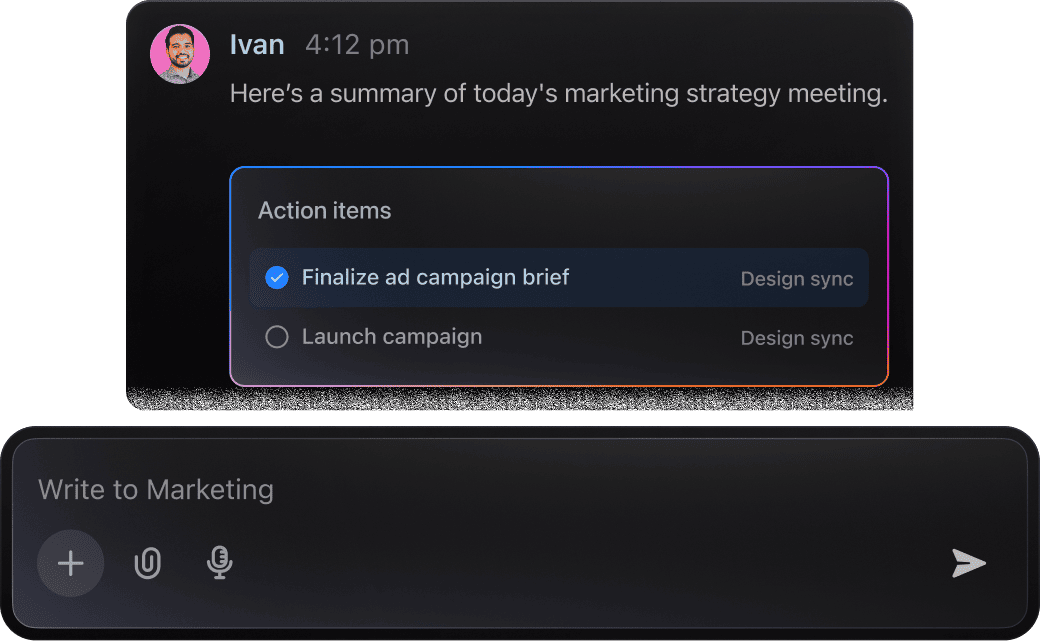
From Concept to Code
Developers often juggle detailed specifications and feedback loops. ClickUp Brain empowers you to pinpoint key tasks, identify blockers early, and create clear next steps from complex documentation.
Leverage ClickUp Brain to:
- Condense sprint retrospectives and planning notes into actionable items
- Convert design annotations into precise development tickets
- Automatically generate bug summaries or release notes
- With Brain Max, effortlessly retrieve past design choices, component analyses, or team discussions across your projects—eliminating tedious searches through technical documents.
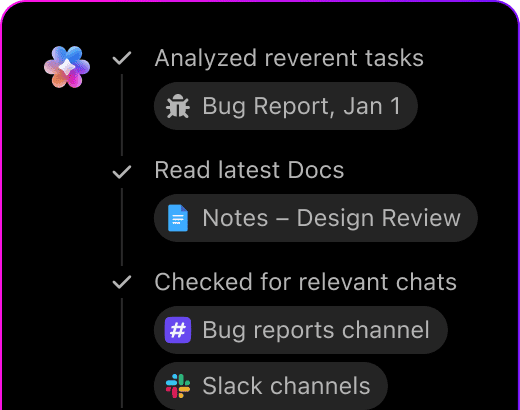
Agile Project Management with ClickUp Brain
Managing Agile workflows involves coordinating sprints, backlog grooming, and team retrospectives. ClickUp Brain simplifies this complexity—extracting key takeaways and crafting clear task descriptions aligned with your Agile practices.
Leverage ClickUp Brain to:
- Analyze sprint review notes for actionable tasks
- Create user stories and acceptance criteria with consistent language
- Convert team discussions into prioritized backlog items
- Brain Max enhances this by referencing past sprint data or similar project patterns, supporting continuous improvement throughout your Agile cycles.
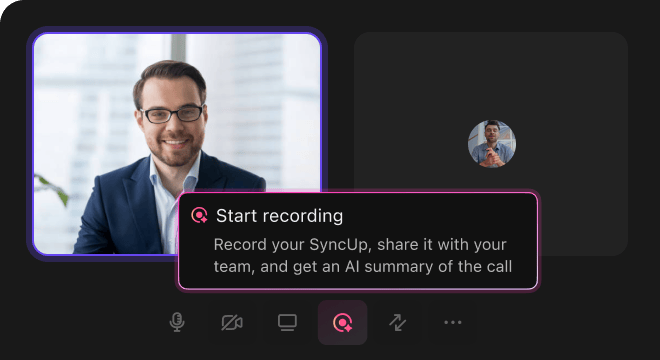
AI Advantages
How AI Prompts Revolutionize Agile Project Management
Integrating AI prompts into your Agile processes accelerates every sprint phase:
- Kick off planning swiftly: Transform backlog items into user stories, acceptance criteria, and sprint goals effortlessly
- Reduce bottlenecks: Detect workflow blockers by analyzing past sprint reviews and team feedback
- Align your team: AI-crafted summaries and action points keep everyone focused and informed
- Make informed choices: Generate insights on project risks, dependencies, and stakeholder priorities
- Innovate continuously: Uncover fresh approaches that push beyond your current roadmap.
All these capabilities work hand-in-hand within ClickUp, turning AI-generated content into actionable tasks, documentation, and performance dashboards that drive your Agile projects forward.
Prompt Strategies
Crafting Effective Prompts for Agile Success
Clear prompts drive focused Agile outcomes.

Define the Agile scenario clearly
Vague prompts yield unfocused results. Specify details like sprint type (e.g., “two-week iteration” or “release planning”), team role (e.g., “Scrum Master” or “Product Owner”), or project phase (e.g., “backlog refinement” or “retrospective”).
Example: “Generate user story ideas for a mobile app sprint targeting remote workers.”

Use comparative prompts to evaluate options
AI excels at drawing distinctions between approaches. Use prompts like “compare X and Y” to assess sprint planning techniques, tool integrations, or team workflows.
Example: “Compare Kanban versus Scrum for managing a cross-functional software team.”

Frame prompts around Agile goals
Approach your prompt as a specific Agile objective. Instead of “Suggest Agile practices,” focus on outcomes:
Example: “Design a daily stand-up agenda that boosts team engagement and uncovers blockers quickly.”

Specify the output format
Need a checklist, user story template, sprint schedule, or retrospective agenda? Be explicit. AI delivers better when the response format is clear.
Example: “Provide a bullet list of five key metrics to track during a sprint review with explanations.”
Accelerate Agile Planning with ClickUp Brain
ClickUp Brain goes beyond managing tasks—it’s your strategic partner throughout every sprint and iteration in Agile development.





